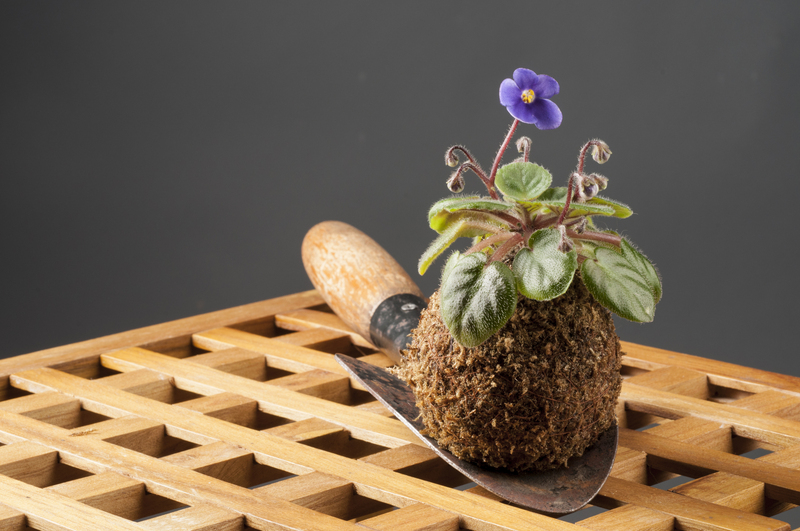Garden Storm Damage: Key Facts
Posted on 06/04/2025
Storms can wreak havoc on gardens, leaving behind a trail of destruction that can take weeks, if not months, to rectify. From uprooted trees to inundated flower beds, the damage can be extensive and disheartening. Understanding the impact of storm damage on gardens and how to mitigate its effects can help garden enthusiasts and homeowners protect their green spaces.
The Various Faces of Storm Damage
Storms can affect gardens in multiple ways, including wind damage, flooding, hail, and even lightning strikes. Each type of damage requires a different approach in both prevention and recovery.
Wind Damage
Strong winds can cause significant damage to garden structures and plants. Tall trees and stately shrubs are particularly prone to losing branches or being entirely uprooted. Additionally, wind can break delicate stems, rip leaves, and even topple fences and garden sheds.
Flooding
Excessive rainfall can lead to flooding, which can drown plants and wash away nutrient-rich topsoil. Pooled water can also lead to root rot and other fungal diseases, causing a long-term detriment to plant health.
Hail
Hailstorms can be particularly destructive, with ice pellets damaging leaves, flowers, and stems. The physical impact of hail can also leave plants more susceptible to diseases, making it challenging to restore a garden's former glory.
Lightning Strikes
While rarer, lightning strikes can cause immediate and extensive damage to trees and surrounding plants. A strike can split a tree, causing it to fall and damage other parts of the garden.

Preventing Garden Storm Damage
While it may be impossible to control the weather, there are several preventative measures that gardeners can take to minimize storm damage.
Plant Selection
Choosing the right plants can make a significant difference. Opt for native species that are adapted to local climate conditions and generally more resilient to storms. Additionally, planting windbreaks, such as dense hedges, can offer protection to more fragile plants.
Pruning and Maintenance
Regular pruning and maintenance can keep trees and shrubs healthy and more resistant to wind damage. Remove dead branches and thin out dense canopies to allow wind to pass through more easily, reducing the risk of uprooting.
Structural Support
Building sturdy garden structures can provide extra protection during storms. Secure fences, trellises, and arbors to withstand strong winds. For young or top-heavy plants, staking can offer additional support.
Drainage Solutions
Implement effective drainage systems to prevent flooding. Raised beds, proper grading, and the incorporation of organic matter into the soil can improve water absorption and reduce pooling.
Assessing Damage After a Storm
Once a storm has passed, it's crucial to assess the damage comprehensively to decide on the next steps for recovery.
Immediate Assessment
Immediately after a storm, inspect the garden for any hazardous conditions such as fallen trees or broken branches. Make safety your priority before starting any clean-up process.
Documenting Damage
Document all the damage with photos and detailed notes. This documentation can be useful for insurance claims and for planning the recovery process.
Initial Clean-Up
Remove any debris that poses a risk to people or animals. However, be cautious not to trample the garden, as the soil is likely to be saturated and compacting it can cause further damage.
Recovery and Restoration
Restoring a garden after a storm can be a daunting task, but a systematic approach can make the process more manageable.
Tree and Shrub Care
For damaged trees and shrubs, prune broken branches and assess whether the plant is still structurally sound. In cases of significant uprooting or major splits, consulting a professional arborist may be necessary.
Soil Health
Assess the health of the soil, especially if flooding has occurred. Amending the soil with compost or other organic matter can help restore nutrient levels and improve drainage.
Replanting and Rejuvenation
Begin replanting damaged areas once the soil is in good condition. Consider using fast-growing plants to quickly restore greenery. Also, take this opportunity to implement any additional storm-preventative measures.

Long-term Strategies for Storm Resilience
Building long-term resilience means adopting gardening practices that prioritize durability and adaptability.
Diverse Planting
Diversifying the types of plants in your garden can create a more resilient ecosystem that can better withstand storm impacts. A mix of perennials, annuals, shrubs, and trees can provide structural support and biodiversity.
Adaptive Gardening Techniques
Adopt gardening techniques such as xeriscaping, which focuses on drought-tolerant species, or permaculture, which emphasizes natural landscapes that are more resilient to weather changes.
Innovative Solutions
Incorporate innovative solutions such as rain gardens, which are designed to absorb and manage excess water, or green roofs, which can provide additional planting space while reducing runoff.
Conclusion
Garden storm damage can be highly challenging, but understanding the types of damage, prevention methods, assessment strategies, and recovery techniques can significantly minimize its impact. By adopting long-term, resilient gardening practices, gardeners can not only recover from storm damage but also create beautiful, sustainable environments capable of withstanding future weather extremes. Whether you're a casual gardener or a dedicated horticulturist, the key is to stay informed and prepared, ensuring your garden remains a sanctuary of beauty and tranquility regardless of the stormy weather.




